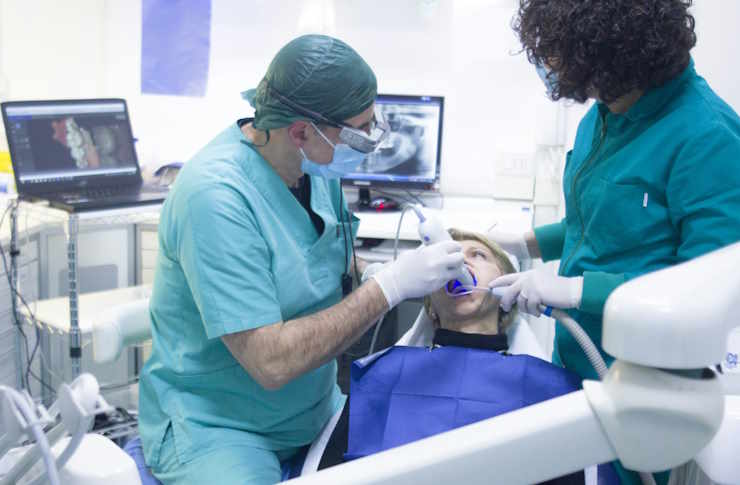Lasik Eye Surgery - The Complete Guide to Clear Vision
Lasik eye surgery has transformed millions of lives by correcting vision problems and reducing dependence on glasses and contact lenses. This laser-based procedure reshapes the cornea to improve how light enters the eye, offering a permanent solution for common refractive errors like nearsightedness, farsightedness, and astigmatism. Understanding the process, benefits, and considerations can help you make an informed decision about this life-changing procedure.

Clear Vision Starts Today: Understanding the Lasik Process
The Lasik procedure begins with a comprehensive eye examination to determine if you’re a suitable candidate. During surgery, an ophthalmologist creates a thin flap in the cornea using either a microkeratome blade or a femtosecond laser. The underlying corneal tissue is then reshaped using an excimer laser, which removes microscopic amounts of tissue with precision. The entire process typically takes 10-15 minutes per eye, and most patients experience improved vision within 24 hours.
Modern Lasik technology includes wavefront-guided treatments that create a detailed map of your eye’s unique imperfections, allowing for highly personalized corrections. This advanced approach can address higher-order aberrations that traditional methods might miss, potentially providing even sharper vision than glasses or contacts.
No More Glasses, No More Limits: Freedom from Corrective Lenses
One of the most significant advantages of Lasik surgery is the freedom it provides from daily dependence on corrective lenses. Many patients achieve 20/20 vision or better, eliminating the need for glasses during most activities. This independence proves particularly valuable for athletes, outdoor enthusiasts, and professionals whose work involves physical activity or situations where glasses might be impractical.
The convenience extends beyond sports and work. Simple daily activities like swimming, waking up with clear vision, or not worrying about losing or breaking glasses become effortless experiences. Many patients report increased confidence and improved quality of life following their procedure.
Your Eyes - Your Future: Long-term Benefits and Considerations
Lasik surgery offers long-lasting results, with most patients maintaining their improved vision for decades. Studies show that over 95% of patients achieve their desired vision correction, and satisfaction rates consistently exceed 90%. The procedure can correct nearsightedness up to -12 diopters, farsightedness up to +6 diopters, and astigmatism up to 6 diopters.
However, it’s important to understand that eyes naturally change with age. Presbyopia, the gradual loss of near vision that typically begins in the mid-40s, will still occur regardless of Lasik surgery. Some patients may eventually need reading glasses or additional procedures as they age, though distance vision typically remains stable.
The Smart Choice for Clear Sight: Evaluating Your Candidacy
Not everyone qualifies for Lasik surgery. Ideal candidates are at least 18 years old with stable vision for at least one year, healthy corneas, and realistic expectations about outcomes. Your eye doctor will evaluate corneal thickness, pupil size, tear production, and overall eye health to determine suitability.
Certain conditions may disqualify you from Lasik, including severe dry eyes, thin corneas, large pupils, or autoimmune diseases. Pregnant or nursing women should wait until their hormones stabilize, as pregnancy can temporarily affect vision. Alternative procedures like PRK or implantable contact lenses might be recommended for those who don’t qualify for traditional Lasik.
Discover the Power of Lasik: Real-world Costs and Provider Options
Understanding the financial investment in Lasik surgery helps you plan effectively and choose the right provider for your needs. Costs vary significantly based on technology used, surgeon experience, and geographic location.
| Provider Type | Technology Offered | Cost Estimation |
|---|---|---|
| National Chains | Standard to Premium Lasik | $1,500 - $3,000 per eye |
| Private Practice | Custom Wavefront Lasik | $2,000 - $4,000 per eye |
| Academic Medical Centers | Research-grade Technology | $2,500 - $5,000 per eye |
Prices, rates, or cost estimates mentioned in this article are based on the latest available information but may change over time. Independent research is advised before making financial decisions.
Most insurance plans consider Lasik elective and don’t provide coverage, though some offer discounts through preferred providers. Many practices provide financing options, including payment plans and medical credit cards. Some employers offer flexible spending accounts or health savings accounts that can be used for Lasik expenses, providing potential tax advantages.
When comparing providers, consider factors beyond price, including surgeon credentials, technology used, follow-up care included, and enhancement policies. Many reputable practices offer lifetime enhancement guarantees or free touch-up procedures if your vision changes significantly.
Lasik eye surgery represents a significant advancement in vision correction technology, offering millions of people the opportunity to see clearly without dependence on glasses or contact lenses. While the procedure isn’t suitable for everyone, qualified candidates often experience life-changing results with high satisfaction rates and long-lasting vision improvement. Careful research, thorough consultation with qualified professionals, and realistic expectations are essential components of a successful Lasik experience.
This article is for informational purposes only and should not be considered medical advice. Please consult a qualified healthcare professional for personalized guidance and treatment.




